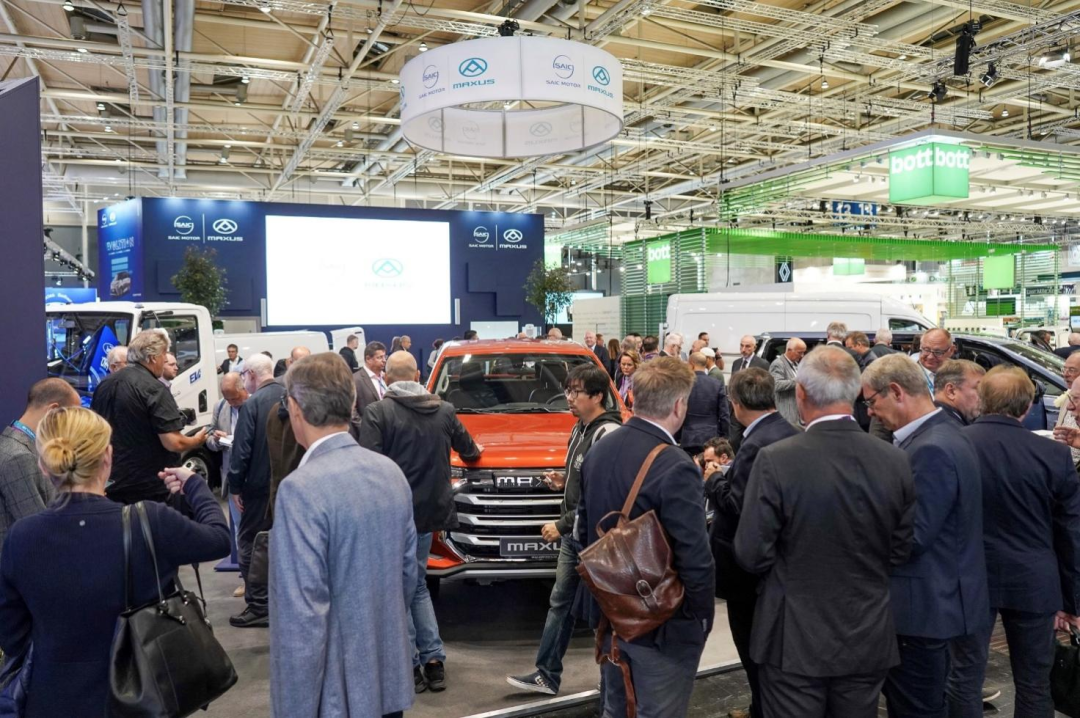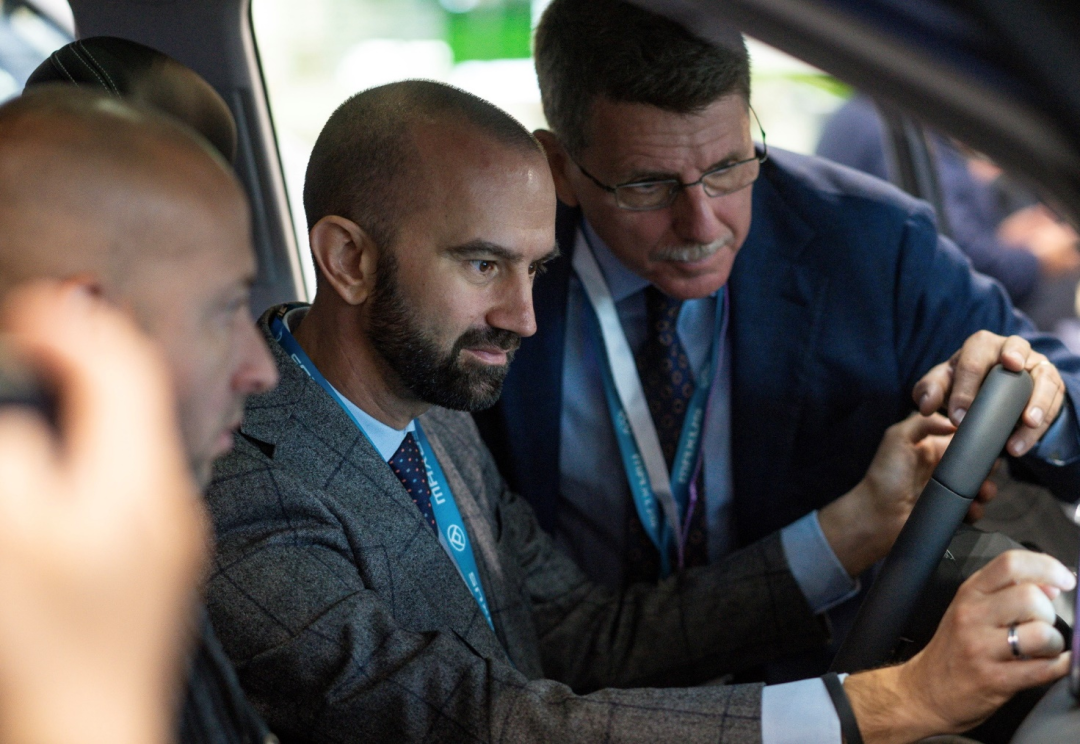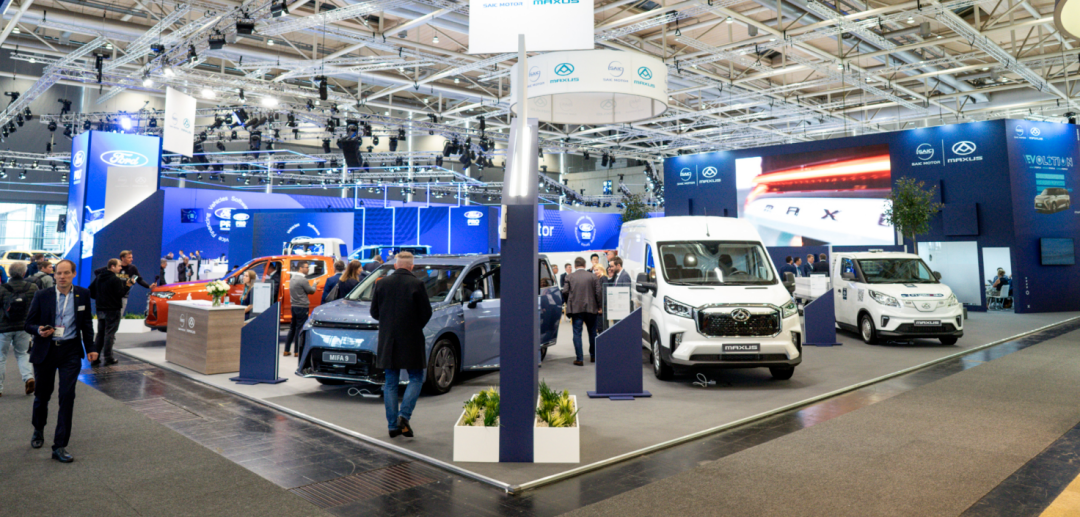Automobile Industry: Embracing Change
140 years ago, horses provided the power for all vehicles in the world, a concept as widely accepted as turning on lights when it gets dark.
German mechanical engineer, Karl Benz, defied this idea, by designing and building the first automobile with a single-cylinder gasoline engine mounted on a three-wheeled chassis, changing the very core of vehicle dynamics. But the car was not initially accepted due to its unconventional power source, and people referred to it as a “foul-smelling monster.” Even the local government opposed the idea, believing that these vehicles would consume gasoline, damage roads and pollute the environment.
Benz’s wife was as unwilling to accept conventional thinking as her husband, so having no prior driving experience, she drove the automobile nearly 200 kilometers to visit her mother-in-law. Benz received a telegram from her stating that the car had passed the test, and he should apply for the Munich Exposition.
Therefore, the world’s first automobile appeared at the Munich Exposition in 1886, igniting the boom of the European automobile industry. Subsequently, the names of inventors such as Gottlieb Daimler, Armand Peugeot, and Andre Citroen became widely known throughout the world.
Today, the core power source of a car is once again undergoing a change. The market is no longer limited to fuel-driven cars, but also includes electric and even hydrogen-powered vehicles, ushering in the next wave of automotive revolution.
Unexplored Blue Ocean Market
Recently, many new cars were showcased at the Hanover Motor Show held in Germany. As the automobile industry’s pinnacle exhibition platform that the world’s leading carmakers participate in every two years, the Hanover Motor Show has a long-standing history in Germany.
In the midst of the ongoing pandemic, organizing such an exhibition became difficult, and hence the recent show was held four years after the previous one, making it all the more cherished. The event was attended by over 1,400 exhibitors from 42 countries, attracting the most discerning consumers from all over Europe and even the world.

The Hanover Motor Show is usually the stage for many European car brands, but this year, Chinese brands such as SAIC Maxus, Ningde Era, etc. made their appearance, catching the attention of European consumers.During the Hanover Motor Show, the crowd gathered around the SAIC MAXUS booth to discuss the pure electric MPV model MIFA 9 and the pure electric pickup truck model T90 EV. In the European market, luxury pure electric MPV models are rare, and pure electric pickup truck models have not yet appeared. Though from a Chinese automotive brand, these models immediately gained significant attention from European consumers.
SAIC MAXUS launched multiple flagship new energy vehicle models in Europe due to the increasing support for new energy in Europe. In June of this year, after 16 hours of negotiations among the 27 EU member states, the EU reached a consensus on the “Fit for 55” agreement, which means a ban on the sale of fossil fuel vehicles in EU countries from 2035. Although this decision was opposed by executives of European traditional car manufacturers such as Volkswagen, BMW, and Mercedes-Benz, it provides Chinese car manufacturers with a rare market opportunity.
To rapidly rise in this new era, finding the right market positioning is particularly important. At present, the European new energy market is filled with sedan and SUV models, which are also the preferred battleground for multinational car manufacturers such as BMW and Volkswagen. In contrast, pure electric MPV models are scarce, and high-end luxury pure electric MPV models are an undiscovered blue ocean market.
While traditional international luxury car manufacturers are slow to turn, SAIC MAXUS launched the world’s first “full-size luxury intelligent pure electric MPV”, the SAIC MAXUS MIFA 9, in Europe this year, becoming the first Chinese brand to release a pure electric high-end MPV product in Europe.Here are three keywords worth attention: Europe, pure electric, and high-end. As the birthplace of automotive culture, Europe has stringent technical regulations and entry barriers. In other words, automobiles that are approved to enter the European market are of no poor quality. In fact, MIFA 9 has already passed the European E-MARK certification and other regulations, designed to meet the EuroNCAP (Europe), C-NCAP (China), and ANCAP (Australia) three five-star safety standards, and adapted to the driving habits of consumers in different countries with left-hand and right-hand driving. This not only makes European consumers pay the bill but also makes it a “global hard currency”.

Pure electric and high-end herald the new identity of this model. MIFA 9 has positioned itself as a pure electric high-end MPV since design, with a starting price of 70,000-80,000 euros in Europe, and a highest configuration version price close to that of Mercedes-Benz EQV at 94,000 euros. But from the perspective of product strength, MIFA 9 is trying to comprehensively surpass the latter.

In overseas markets, SAIC Maxus has always advocated the concept of “high quality and high price”, trying to break the stereotype of “low price, low quality, and low value” of Chinese brands in the outside world. From the most intuitive body size of MIFA 9, the length, width, and height of MIFA 9 are 5270×2000×1840mm, with a wheelbase of 3200mm, far exceeding the same level of models. It is also the first in the same level to be equipped with six independent luxury seats that support the electric adjustment of the entire car. Users can change their sitting position as desired. If users swap positions in the car, MIFA 9 will also automatically adjust to the user’s accustomed posture, suitable in-car temperature, and familiar operating interface according to this.

To make this car a true “third space”, MIFA 9 also uses the high-performance dual-core interconnect technology of Qualcomm 8155 and MediaTek 8666 to provide users with a ten-screen interactive experience of the entire car. At the same time, with the blessings of DMS and dual OMS in the car, the car can achieve imperceptible recognition and achieve “thousands of people, thousands of faces”.In the context of the luxury MPV usage scenarios, MIFA 9 can meet typical needs for official, commercial, and family trips. According to Haokingxian, general manager of SAIC Maxus, the SAIC Maxus R&D center has over 800 software engineers working on self-developed projects in electronic architecture, intelligent driving, and electronic cockpit. Based on this, MIFA 9 uses the new generation intelligent electric drive system developed by SAIC, with a CLTC range of over 560km. Additionally, it is equipped with the UTOPILOT Youdao Zhitu advanced intelligent driving assist system, which can achieve L2++ advanced intelligent driving in China.
As a Chinese car brand incubated under globalization strategy, SAIC Maxus has been equipped with the world’s most advanced technology since its inception, making its products able to meet the highest international standards and enter the most demanding European market. For example, in Germany, SAIC Maxus has a strong technological advantage. Recently, its new energy products won the 2nd prize in “the most innovative volume product brand – electric vehicle” in Germany with overwhelming advantages. And European consumers praised, “SAIC Maxus is leading Europe into the future of electric vehicles.”
MIFA 9 has now arrived in Europe, landing in new energy markets such as Germany, the UK, France, Italy, Spain, and Norway. To some extent, MIFA 9 has become a representative high-end product of Chinese car companies in the European market.
In addition, SAIC Maxus’s T90 EV pure electric pickup truck has also been launched in Europe. It is worth mentioning that this model is the first pure electric pickup truck on the European market, and it was put into mass production earlier than brands like Tesla.
Within just five years of development in the pickup truck field, SAIC Maxus has become the first choice for Chinese pickup trucks in developed countries around the world. It has not only deepened its roots in global pickup highlands such as Oceania, America, and the Middle East, but has also ranked first among Chinese brand pickups in markets such as North America, Chile, and Saudi Arabia. In China, it achieved the second highest sales from January to August this year.
With the support of these two major models, SAIC Maxus has become the first Chinese brand to enter the European pure electric MPV and pure electric pickup truck markets. This not only helps SAIC Maxus to further establish its roots in Europe, accelerate the launch, sales and brand strengthening of subsequent products, but also reduces the difficulty for Chinese brands to enter the European market, helping Chinese brands to establish their reputation in the European market.In the past, the high-end luxury market has always been dominated by multinational car companies. Now, the performance of SAIC Maxus has shown China’s automobile industry another possibility – in the new energy track, Chinese technology has been recognized by developed countries, and Chinese brands have the capital to surpass foreign brands. This not only means that the MIFA 9 and T90 EV have been recognized by Europeans, but also an important step for Chinese brands to move towards high-end markets overseas.
The Code for SAIC Maxus to Go Global
SAIC Maxus stands out quickly from many Chinese brands not only due to its technical and product capabilities, but also much more than that. In order to defeat international old-brand car companies in the European market, Chinese automobile brands need to not only satisfy the diversified needs of European users, but also have a complete car purchase and after-sales service system.
The reason for success first comes from the vision of SAIC Maxus. Unlike most domestic Chinese car brands, SAIC Maxus was founded on the basis of Europe and aimed at the global market from the start. Blue Qing-song, Vice President of SAIC Group, once described the company’s vision: SAIC Maxus aims to become the industry leader in China and a strong global competitor in participating in segmented markets.
He admitted that they initially thought this vision was “pretty high,” but after eleven years of development, SAIC Maxus has become not only the “preferred Chinese car by developed countries around the world,” but also “able to achieve excellent results in global competition, beyond our expectations.”
A series of data have demonstrated this fact: SAIC Maxus has entered 20 European countries, such as the UK, Ireland, Norway, Germany, and Italy. The export volume of new energy to the European market accounts for 17% of the overall export volume, and the sales of new energy vehicles in the European market are as high as 90%. Based on a variety of product lines, SAIC Maxus has the richest product matrix, the broadest crowd coverage, and the highest level of customization among Chinese car brands in the new energy market, not only in Europe, but also globally.
 One of the reasons why SAIC MAXUS is rapidly developing in the European market is its “keen insight”. Currently, SAIC MAXUS has launched various products in Europe, such as pure electric high-end MPVs, pure electric family MPVs, pure electric light commercial vehicles, pure electric SUVs, and pure electric pickups. Compared with the market capacity in China, these products have greater growth potential in Europe. For example, the market capacity for wide-body light commercial vehicles is only 200,000 in China, but 1 million in Europe, and the market capacity for pickups in Europe is also ten times that of China. This precise selection of markets for segmented vehicle types has made SAIC MAXUS’s efforts “twice the result with half the effort.”
One of the reasons why SAIC MAXUS is rapidly developing in the European market is its “keen insight”. Currently, SAIC MAXUS has launched various products in Europe, such as pure electric high-end MPVs, pure electric family MPVs, pure electric light commercial vehicles, pure electric SUVs, and pure electric pickups. Compared with the market capacity in China, these products have greater growth potential in Europe. For example, the market capacity for wide-body light commercial vehicles is only 200,000 in China, but 1 million in Europe, and the market capacity for pickups in Europe is also ten times that of China. This precise selection of markets for segmented vehicle types has made SAIC MAXUS’s efforts “twice the result with half the effort.”
Secondly, SAIC MAXUS has eleven years of experience in going abroad, which has laid a solid foundation for its current development. Eleven years ago, SAIC MAXUS’s first product, the V80, had just been launched and simultaneously entered the international market, injecting a strong global gene into this Chinese brand. At the same time, SAIC MAXUS began to build its own brand and dealer network overseas.
With the advent of the new energy era, SAIC MAXUS saw the rise of new opportunities. In 2017, it launched its first pure electric wide-body light commercial vehicle EV80 in Europe, opening a new era of new energy vehicle exports. Since then, SAIC MAXUS has continuously launched various new energy segmented market models, from the initial pure electric light commercial vehicles EV90 and EV30, to the pure electric MPV MIFA 5 and pure electric SUV MIFA 6, always launching new products according to changes in the European market. Now, the launch of the high-end pure electric MPV model MIFA 9 has brought it into a new arena of competition, successfully achieving the brand’s advancement.Based on the accumulated experience in overseas markets and established dealer network, the MAXUS brand of SAIC Motor Corporation Exported over 5,000 vehicles in July 2021 to developed countries in Europe such as the United Kingdom, Norway and Ireland. This not only set a record for the largest batch of exported light commercial vehicles by a Chinese brand to Europe, but also broke the record for the largest batch of export of a single vehicle model by a Chinese brand to Europe. Up to now, MAXUS has entered more than 20 European markets and has over 400 dealers. MAXUS has become a representative of excellent Chinese automobile brands in the eyes of European consumers.
Currently, the automotive industry is undergoing rapid transformation. Blue Geumsoo has pointed out two major changes occurring in the industry; one is the addition of electrification, intelligence, and customization to automotive products, while the other is the popularity of direct sales models and the transformation of channels. If MAXUS’s past success was based on unique market insights and globalization strategies, then the two changes in the automotive industry that are happening now are the key areas that MAXUS needs to pay attention to.
In terms of products, in addition to efforts in electrification and intelligence, MAXUS also attaches great importance to “customization”, which is often overlooked by most car companies. In order to gain the recognition of European users, MAXUS adopts the C2B user co-creation customization model. Through this model, MAXUS can quickly develop personalized and differentiated products that match the market policies, environmental characteristics, consumer preferences, and usage requirements of different regions overseas, providing customized solutions for commercial and travel purposes for overseas users.
In the European market, MAXUS provides users with a “full-service solution”. For example, the wide-body light commercial vehicle EV90 supports rich user customization. For example, overseas users like to add adjustable-size cabins to the chassis, which can be adapted to various uses. MAXUS combines their independently developed algorithm formulas, performs flexible “arrangement and combination” according to customer needs, reserves various electrical and even vehicle networking interfaces for users, so that users can receive the chassis and flexibly install the cabins according to their own needs using the “menu” provided by MAXUS. This directly fills the gap in the local market of electric wide-body light commercial vehicles. Mark Barrett, general manager of Harris Group, a dealer in Europe, stated that MAXUS’s EV90 changed the market pattern and allowed consumers to no longer focus only on traditional top European brands such as Mercedes and Ford.
In addition, for the European market, SAIC Maxus offers three different marketing modes: general agency, direct sales, and large customer direct sales. By combining these three marketing modes, the brand aims to achieve the best marketing effect. In July of this year, SAIC Maxus also established a subsidiary, SME (SAIC Mobility Europe), in the European market, continuously deepening the brand’s business model and channel construction in Europe. The importance of channels as one of the key factors in enterprise development is self-evident. Depending on different market characteristics, choosing the right marketing mode requires not only experience but also courage.
A typical example is the market strategy adopted by SAIC Maxus in the UK and Australia. After conducting long-term market research, SAIC Maxus found that although both countries follow English culture, the suitable marketing strategies are completely different. Australians are willing to pay for cross-border products such as pickups, so the distribution model is more suitable here. SAIC Maxus chose a marketing strategy that emphasizes the network brand image and system capability. In the UK, SAIC Maxus mainly sells large and medium-sized electric vehicles such as VAN and EV90, with a single user group and targeting directional industries. Therefore, it adopts a combination of large customer direct sales and project agency models.
With such a market strategy, SAIC Maxus has achieved many successes. In the Australian and New Zealand markets, wide-body light commercial vehicles such as V90 became the local industry’s number one product; this year, SAIC Maxus’s pickup products became the number one product in the Chilean market share; in Norway, the MIFA 5 new energy household MPV model also won the first place in the local sub-market share; EV90 and EV30 have become the green choices of leading customers in various fields in Europe.
Based on past overseas export experience and a judgment on future industry development, SAIC Maxus is continuing to attack overseas markets. Perhaps, in the new era of new energy vehicles, the day when Chinese automakers breathe easily is accelerating toward us.
This article is a translation by ChatGPT of a Chinese report from 42HOW. If you have any questions about it, please email bd@42how.com.
